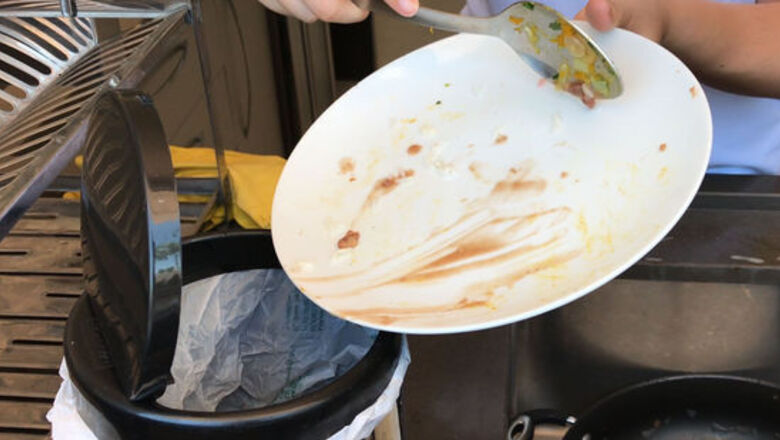
views
Doing a Simple Clean
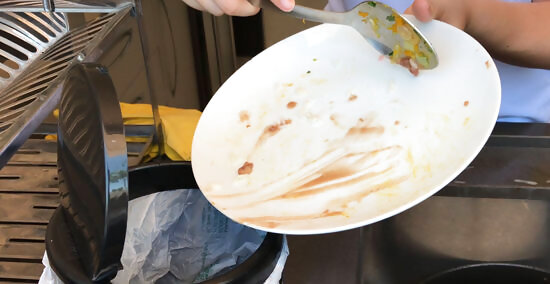
Scrape off any remaining food as soon as you can so it doesn’t stick. When you’re done using a plate, glass, or cooking dish, scrape off the food remnants into the trash or down the garbage disposal right away. If you let the dish sit for more than a few minutes, the food will start to lose moisture and stick to the surface, making it much more difficult to clean off by hand. Use a fork to push food off into the trash. You can also scrape food into the sink and run it down the garbage disposal with some water. Try not to let dishes stack up, especially overnight. They’ll be more difficult to clean, and you’ll be less motivated to clean them!
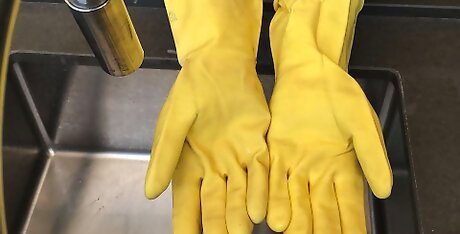
Pull on some rubber gloves for safety and comfort. Rubber dishwashing gloves will keep you clean by protecting your hands from grease and food. They’ll also make it more comfortable to keep your hands under hot water, and help you avoid getting nicked by sharp knives or forks. Rubber gloves are available at cleaning stores and most general stores.
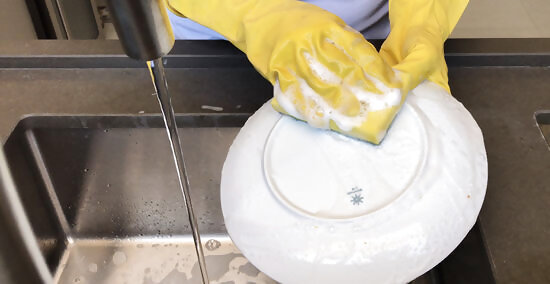
Wash the dishes under a steady stream if you have a small sink. If your sink isn’t divided or you’re just short on time, simplify your washing routine. Turn the hot water on in your sink in a low, steady stream, and pour soap onto your sponge to work into a lather. Wash each dish from the least to most dirty, then rinse it under the hot water.
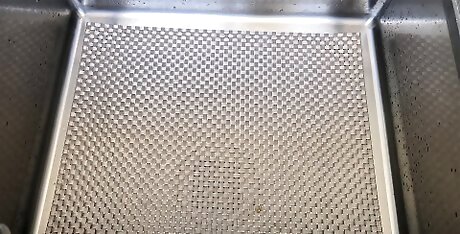
Plug the sink and line it with a plastic mat if you have 2 sink bowls. If your sink is split into 2 sections, you’ll be able to devote one to washing and the other to rinsing. In your washing sink, plug the drain and line the sink with a plastic or rubber mat, if you have one, to protect your dishware. You can also use a separate plastic dish tub.
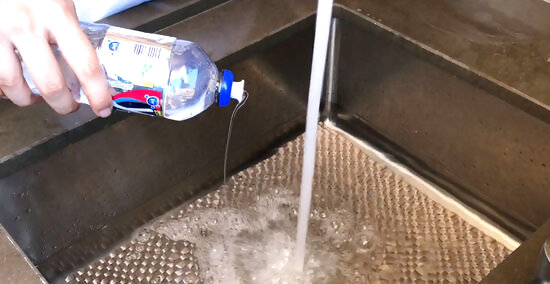
Pour hot water and dishwashing soap into the washing sink. Fill your washing sink about halfway up with the hottest water you can tolerate. As the water runs, squirt in a few drops of liquid dish soap to get it sudsy.
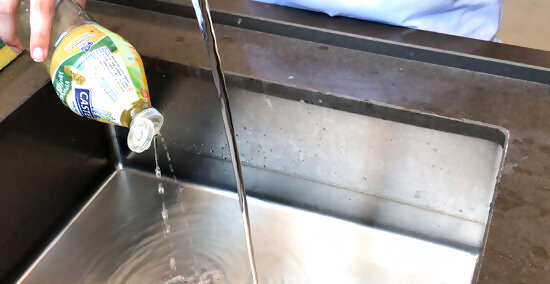
Fill the other half of the sink with cool water and vinegar for rinsing. Plug up the bottom of your rinsing sink and fill it about halfway up with cool water. While you’re running the water, pour in a ½ cup (118 mL) of plain white vinegar, which will act as a rinse agent and help you avoid spots and streaks on your glasses. You can also set up a rinsing station in a separate tub. You can also rinse the dishes in the same half of the sink, but the water level will rise faster and get dirtier more quickly.
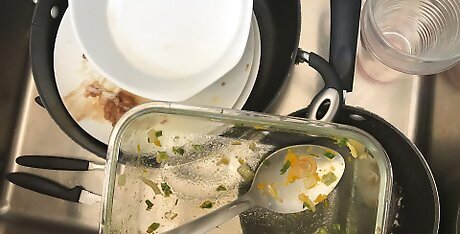
Clean your dishes from least to most dirty. Once your sinks are full, place in 5-6 items at a time, depending on their size. You’ll start with your least dirty dishes and move steadily towards the ones that need the most scrubbing and cleaning. This will keep your water clean for as long as possible, meaning you won’t have to drain it as frequently. What dishes should I wash first? Try this order: Drinking glassesCutleryPlates and bowlsGreasy serving dishes, pots, and pans
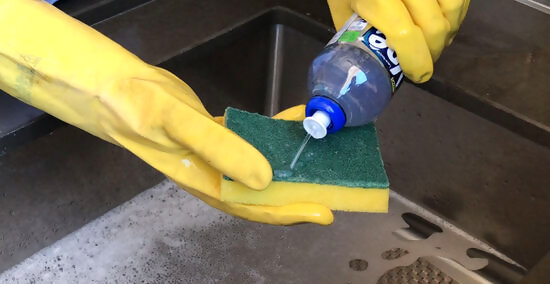
Dip each dish in the soapy water and scrub it with a sponge. Squirt some extra soap onto your sponge. Grab a dish and start scrubbing gently but firmly until all food residue has been cleared. Tip: Start scrubbing at the back or bottom of the plate or glass and move towards the eating and drinking surfaces last. This will help you avoid spreading germs on accident. And remember: Use a high quality, non-scratching sponge with 1 side for scrubbing and another for sponging. You can also use a dish wand with a sponge attachment, a dish brush, or a scraper for burnt-on food.
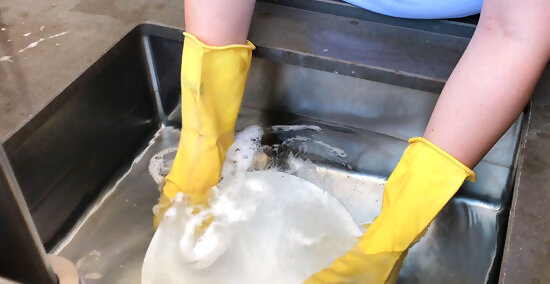
Rinse each dish in the cool water and vinegar solution. Once you’ve sponged each dish clean, dip it into your cool water and vinegar solution in the other sink. Swish it around in the water to clear off all the soap suds.
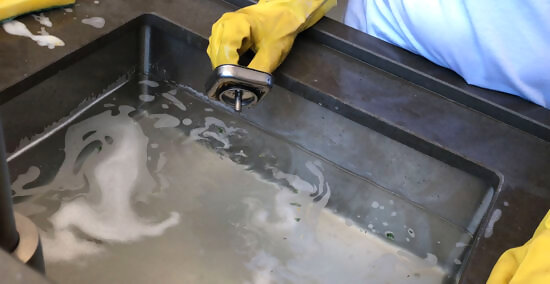
Drain and refill the water when you notice it getting dirty or greasy. The water in both sinks will inevitably start to get a little grimy or greasy—you’re washing dirty dishes, after all! When you see this start to happen, pull the sink plug. Wash the dirty water down the drain, run the garbage disposal for any food remnants, and repeat the process of filling up your sink. You can tell the water needs to be drained when it starts getting gray or discolored, when you can spot a shiny layer of grease or fat on top, or when you can see food particles floating.
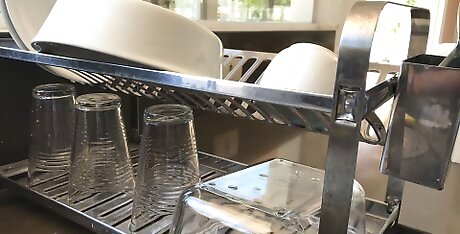
Set the dishes in a dish rack to dry. Set cups and bowls into the dish rack upside down to let water drain out, and set plates and silverware upright. To catch the dripping water, place a baking sheet covered with a dish towel under the drying rack. Dish Rack or Towels? You should use a dish rack for as many dishes as you can; drying with a towel can spread bacteria. If you need to use a towel for some dishes, choose a microfiber towel, which dries more quickly and efficiently. How often should I wash my towels? Whenever you see them getting dirty or damp. This includes the towel below your drying rack! Tip: Place larger items that won’t fit in a dish rack, like pots or pans, on the stove to drip dry.
Scrubbing Off Tough Food and Stains
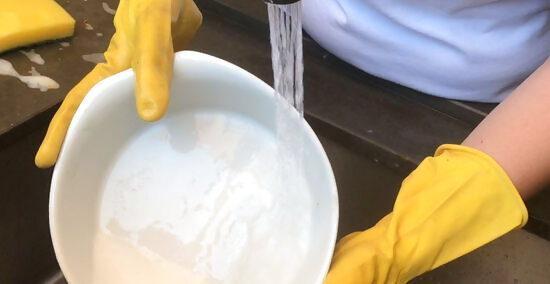
Scrub off starches and dairy products with cold water so they don’t clot up. Hot water can cause dairy products and starches, including potatoes, pasta, and rice, to gum up on the surface of dishes. To make these foods easier to clean off, wash dishes under cool water instead of hot. For dairy products, be especially vigilant with thicker foods like yogurt and cheese. You’ll likely be able to wash milk glasses with regular hot water.
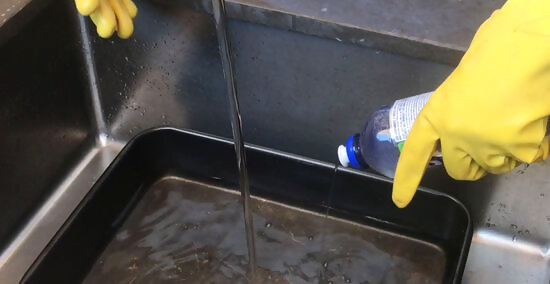
Clean dishes with baked-on food using water, soap, and baking soda. Pots and pans, as well as some serving dishes, can develop caked-on food or stains that are tough to get rid of with normal washing methods. Instead, fill them with warm water and a few drops of liquid dishwashing soap. Sprinkle some baking soda on top for mild abrasion to work away really tough foods, then let the dish soak overnight. In the morning, rinse out the dish and wash it clean with soap and hot water.
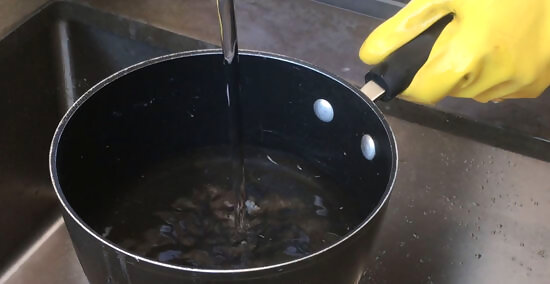
Soak pots overnight with salt and water to get rid of burn marks. Fill your burnt pot or pan with cold water and 2-3 tbsp (34-51 g) of salt. Let it soak overnight, then place the pot on the stove and slowly bring it to a boil. Repeat the process until the burn marks disappear, then wash the pot normally.
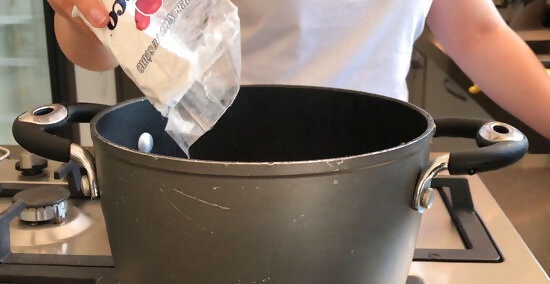
Clean burned pots and dishes on the stove or oven if you can’t wait overnight. If you need to clean your burned pot, pan, or baking dish more quickly, sprinkle a spoonful of baking soda into the bottom and fill it with water. Place the pot or pan on the stove and set it on high to let it simmer for about 5 minutes. For a baking dish, place it in the oven until the water starts to simmer. Then, dump out the water and wash the dish as normal. Use a dish brush or the coarser side of a sponge to scrub away the burnt food.
















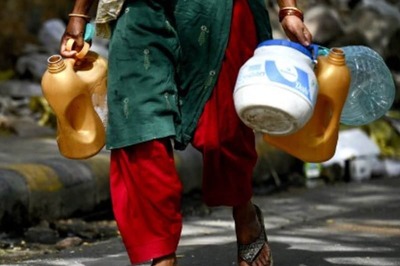

Comments
0 comment